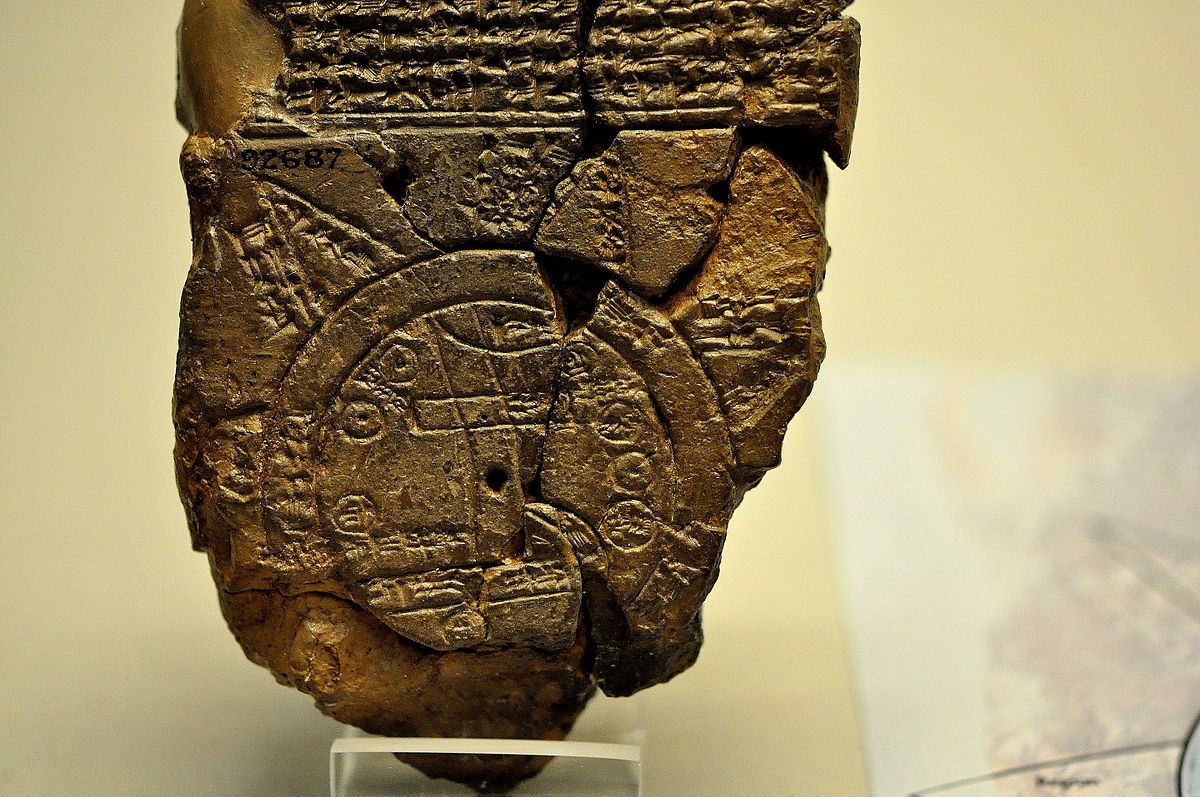Imago Mundi: The Oldest Known Map

The Imago Mundi, a Babylonian map of the world, is the earliest globe that has been discovered. The fifth century BC is when this map was created. This map, which was discovered in the city of Sippar in southern Iraq, depicts a small portion of the world as it was known to the ancient Babylonians. This clay tablet, made into a map, was discovered on the hospitable Euphrates River’s east bank, north of the ancient city of Babylon.
This map places the city of Babylon in the middle and depicts the world and the skies from the perspective of the Babylonians themselves. As other civilizations had done with Athens or Jerusalem, Babylon was placed in the center because it was the center of life for the thousands of people who lived there. Without the aid of contemporary technologies like satellites, map-making tools, and dependable long-distance transportation, this was the only perspective they had. Though it may be imperfect, this little tablet provides a glimpse into their worldview and ideals.
In the map, two circles show bodies of water that may have been close to Babylon at the time, and seven cities and seven islands encircle the metropolis of Babylon. The water parameters on the map are identified as a salt sea and a river of bitter water in the cuneiform text at the tablet’s top, which also labels each place.
This map depicts the world and the skies from the perspective of the Babylonians themselves. As other civilizations had done with Athens or Jerusalem, Babylon was placed in the center because it was the center of life for the thousands of people who lived there. Without the aid of contemporary technologies like satellites, map-making tools, and dependable long-distance transportation, this was the only perspective they had. Though it may be imperfect, this little tablet provides a glimpse into their worldview and ideals.
In the map, two circles show bodies of water that may have been close to Babylon at the time, and seven cities and seven islands encircle the metropolis of Babylon. The water parameters on the map are identified as a salt sea and a river of bitter water in the cuneiform text at the tablet’s top, which also labels each place.
Mountains, a swamp, a canal, three nameless cities, Urartu, Assyria, Der, Elam, Bit Yakin, Habban, Babylon, and an unnamed place are all marked on the map. The southern marshes of modern-day Iraq are supposed to be represented by parallel lines below the indicated city of Babylon, and a curving line is supposed to show the Zagros Mountain, which would have been seen nearby.
The fact that the map in the cuneiform inscription is a duplicate of an even older map of the area that has been lost to memory and time is another characteristic of the map. Even though it is a replica of an earlier design, the map’s distinctive viewpoint reveals how the Babylonians perceived both the physical earth and the legendary heavenly realm.
The known regions and the islands encircling Babylon are believed to be mythical representations of the relationship between the earth and the heavens; they do not actually exist in the physical world. The tablet’s reverse side features a representation of the night sky with familiar constellations that correlate to our current understanding of the zodiac.
The Babylonians produced the oldest map that is still in use today as a result of the merger of the sky and the earth, the realities of life in their surroundings, and the precise charting of the universe above them.
Related Post
The entire tomb is filled with signs and symbols that mention Queen Nefertiti and after some time passed and linguistic experts managed to decipher the stories told here, the team was baffled.
The mystery of the Solar Temple of Abu Gurab and its “Star Gate” comes to light
Thuya, the mother of Queen Tiye, left a monumental legacy by becoming the grandmother of Akhenaten and Tutankhamun.
The oldest traditions lead us to believe that blacks were the first inhabitants of Mexico.
The REAL face of King Tut: The pharaoh had feminine hips, clubfoot, and protruding teeth according to the ‘virtual autopsy,’ which also revealed that his parents were brother and sister.
The “oldest gold of humanity” was found in the Varna necropolis, on the Bulgarian Black Sea coast



